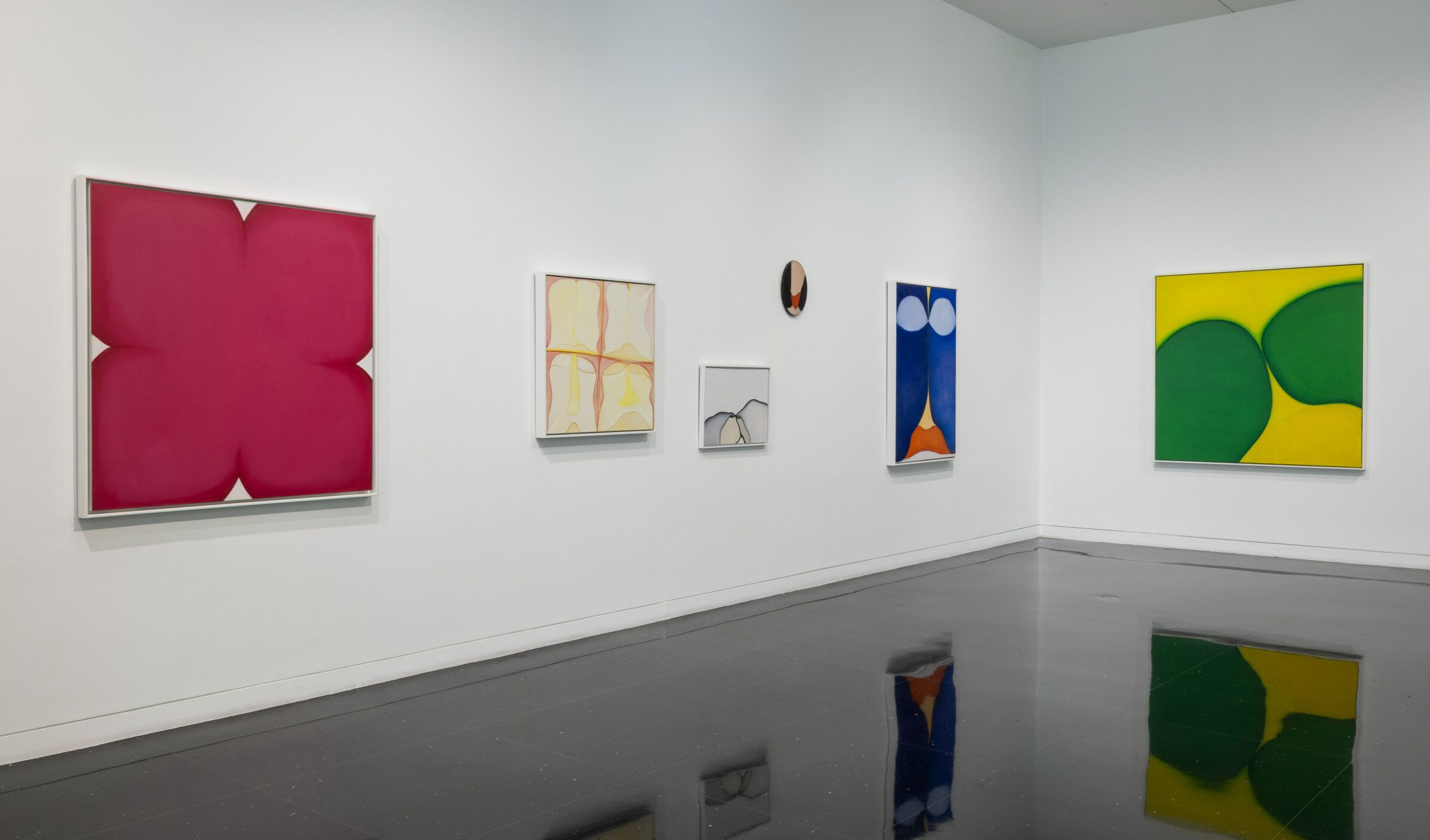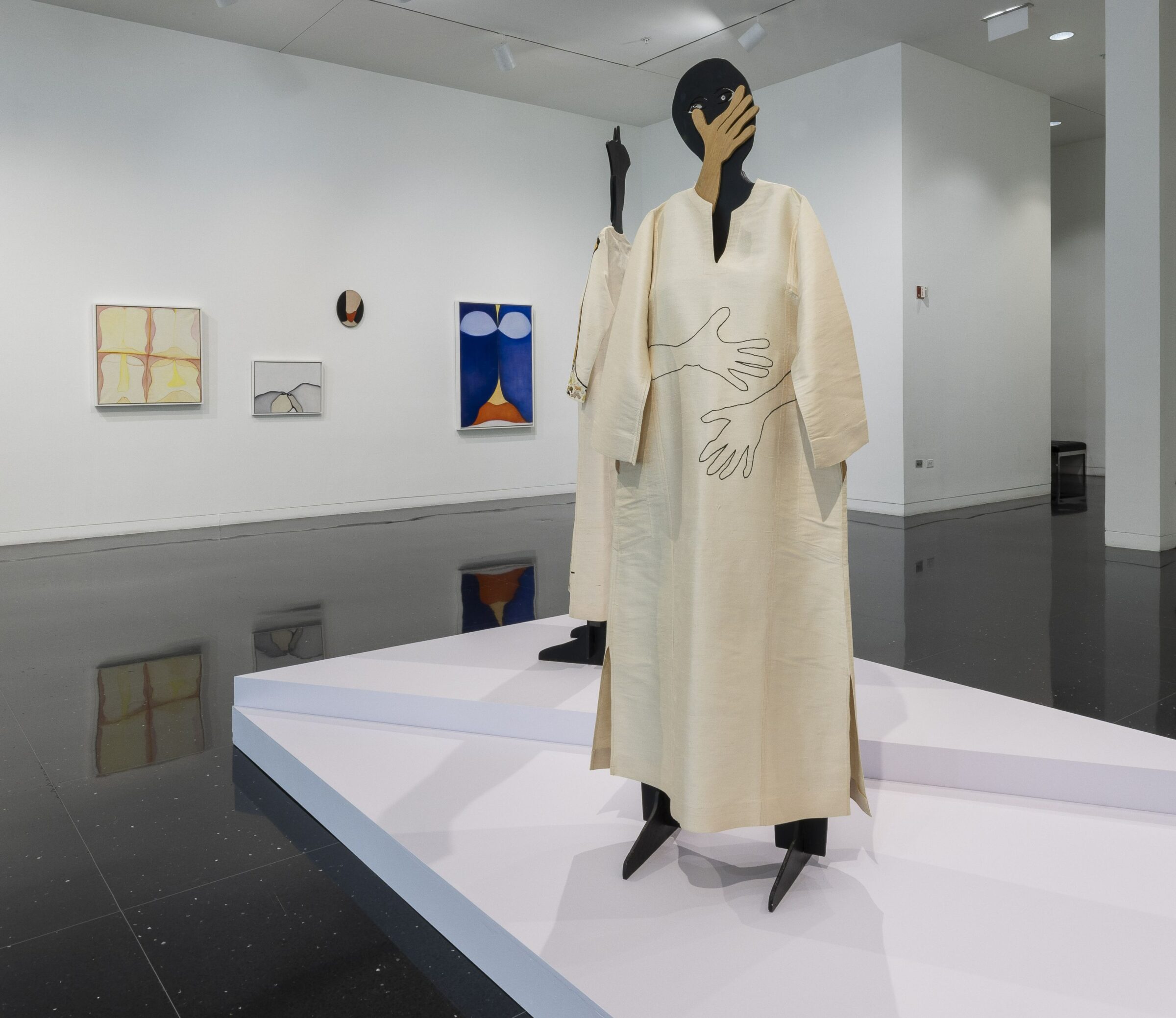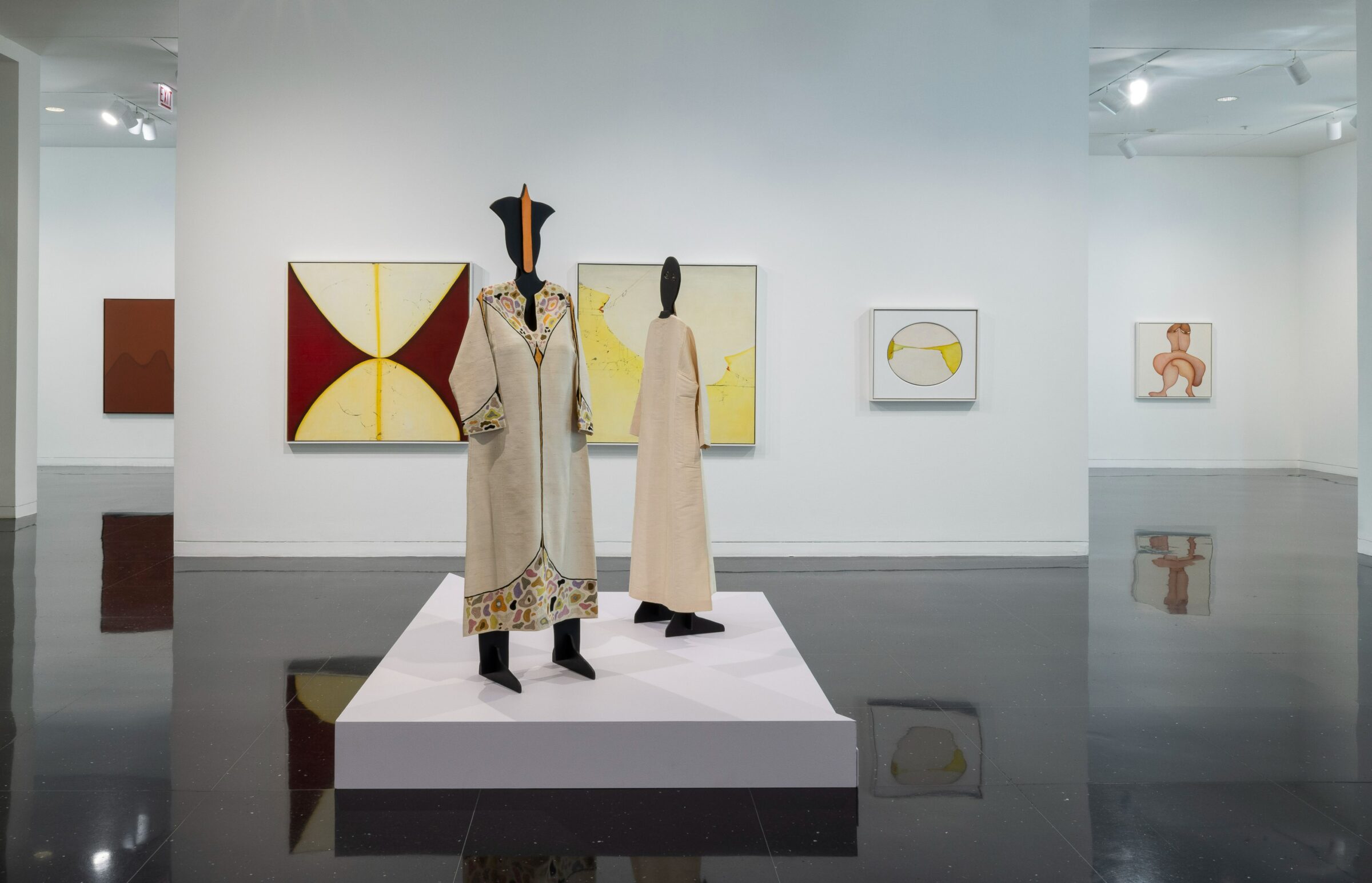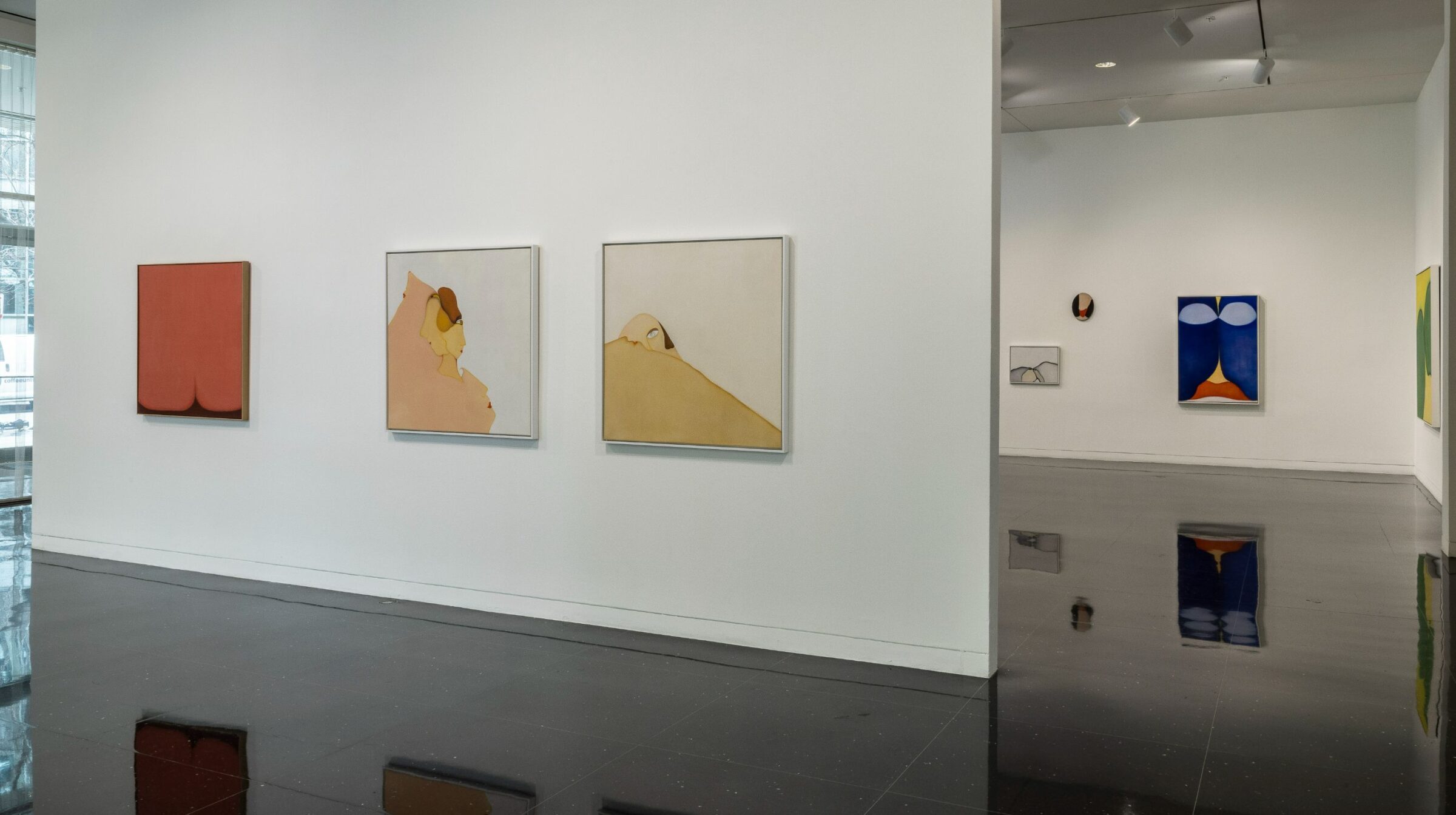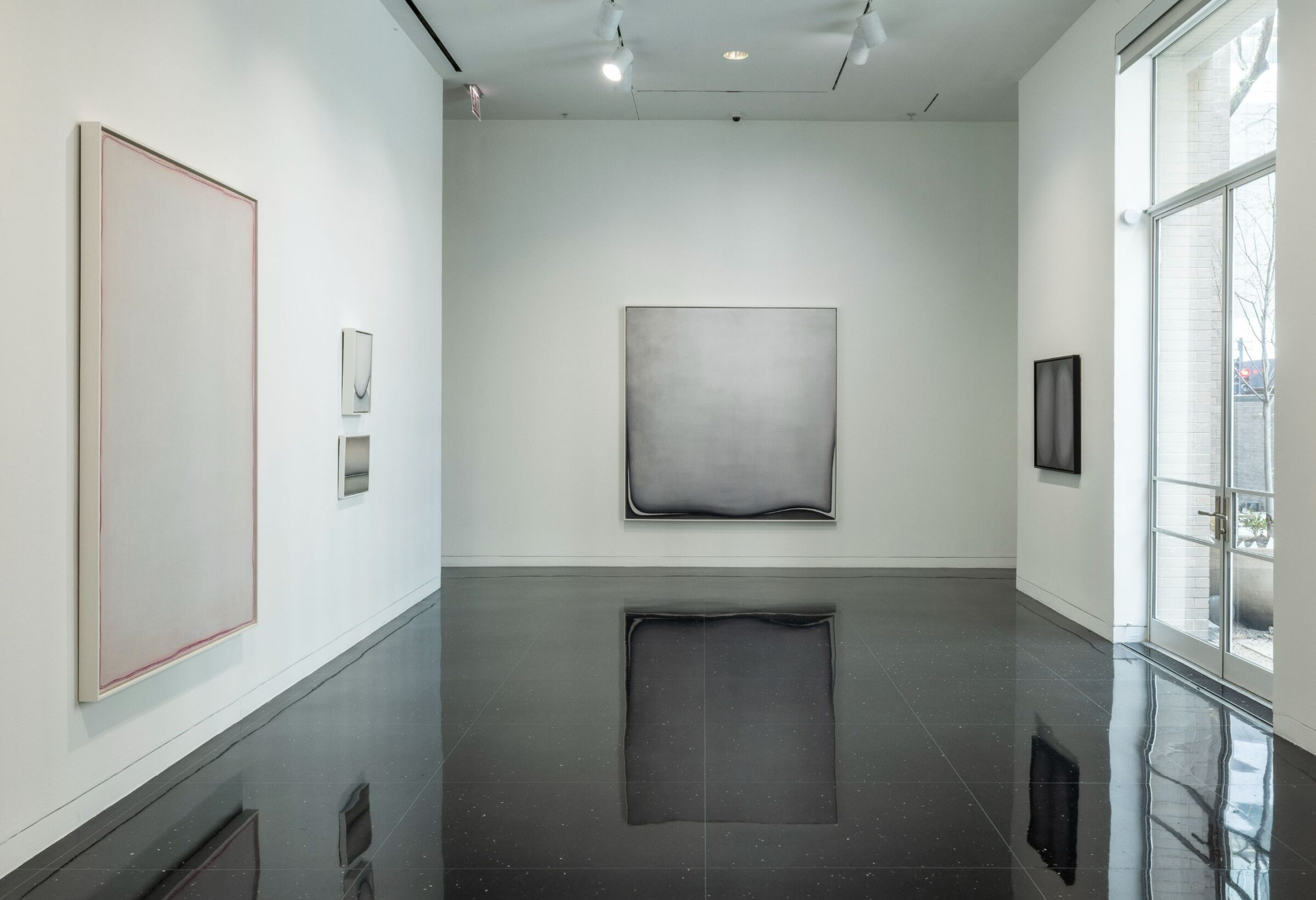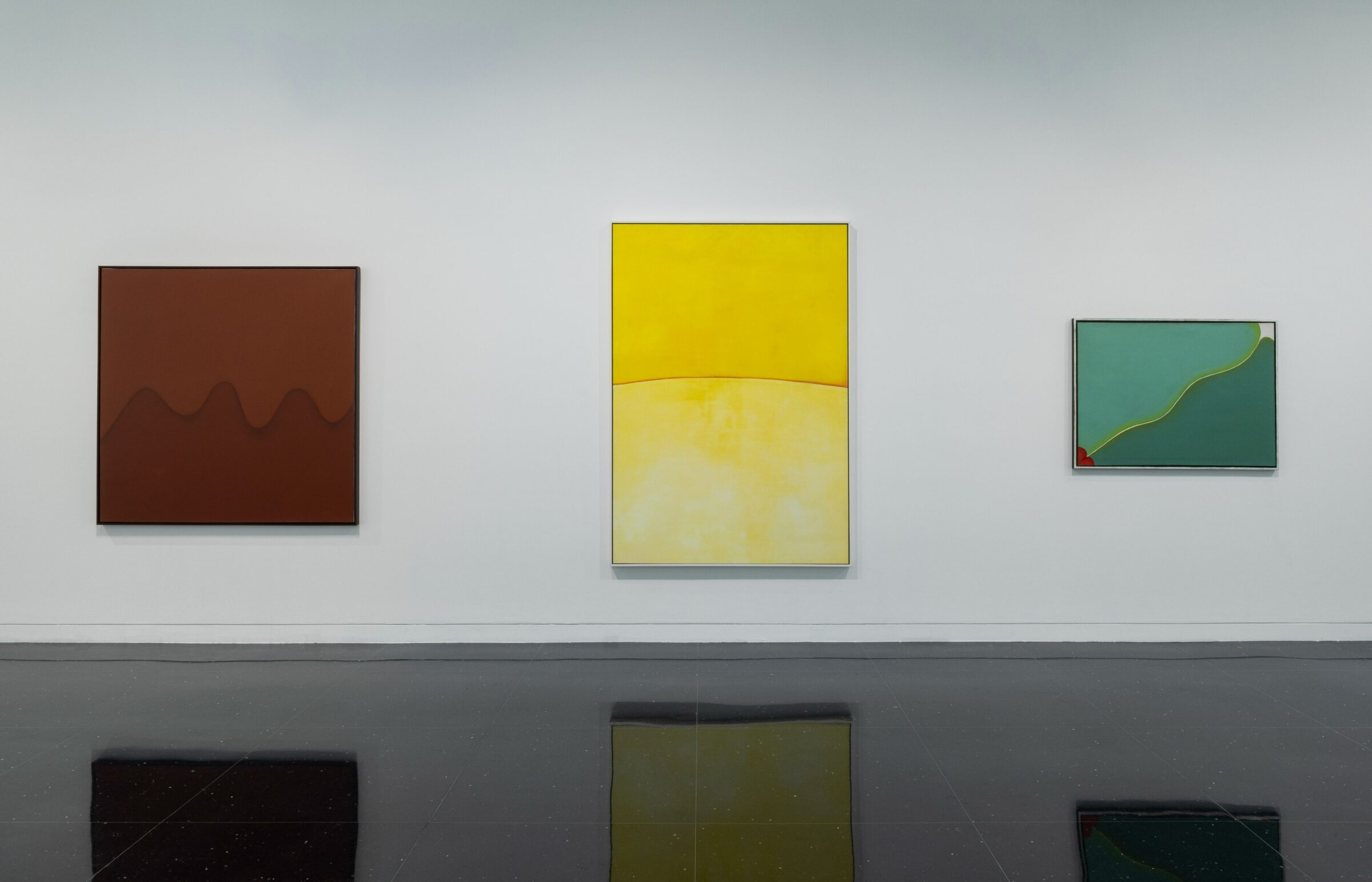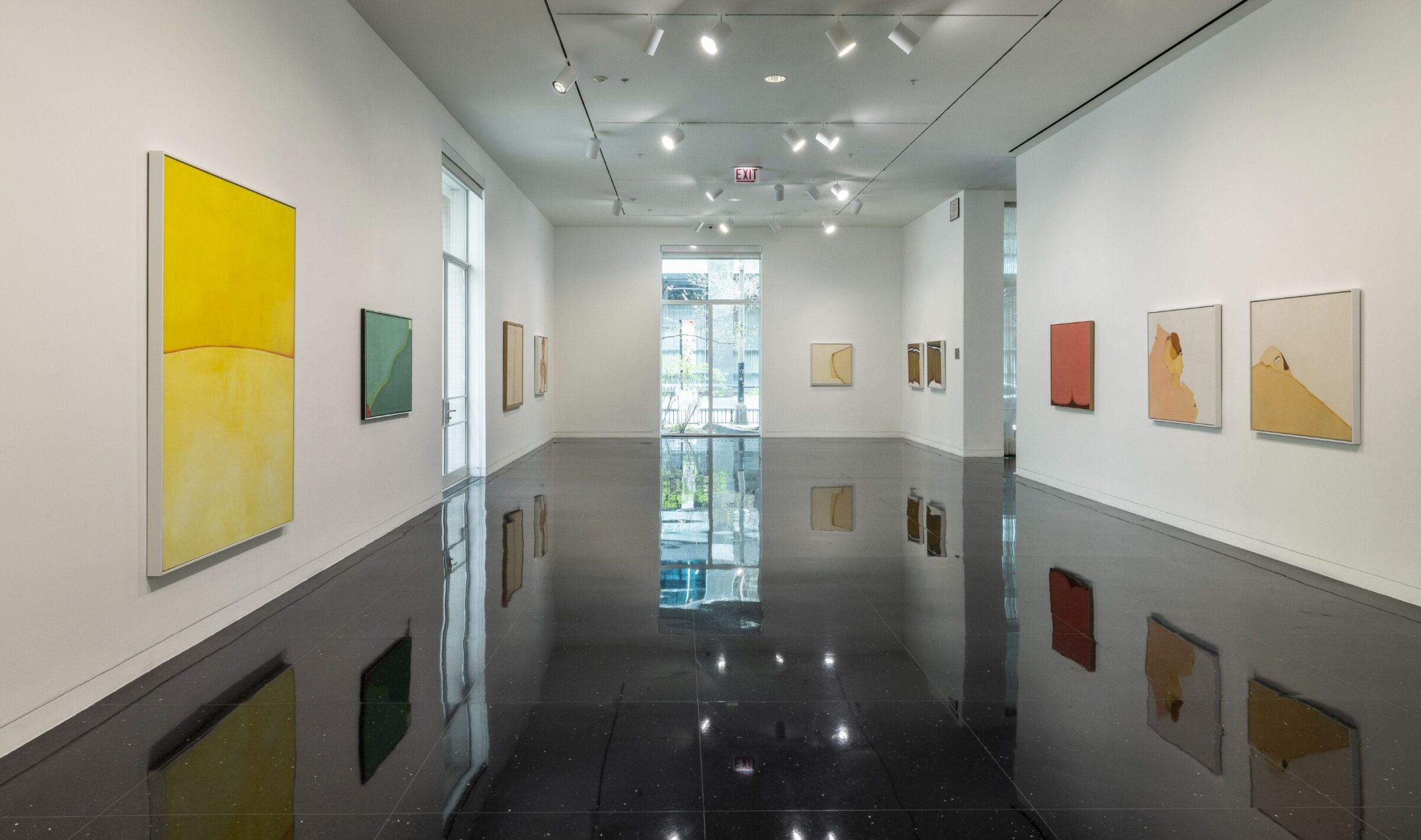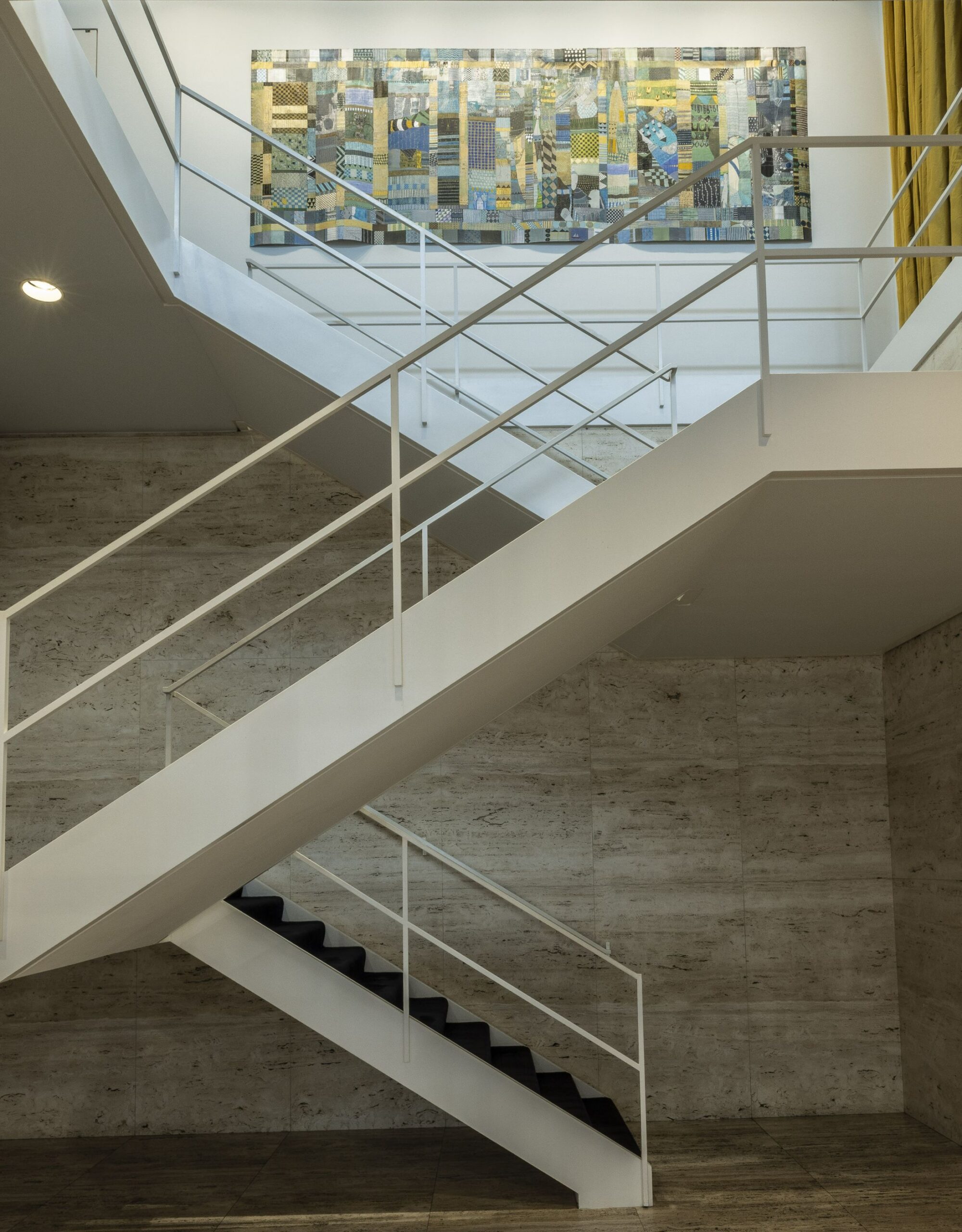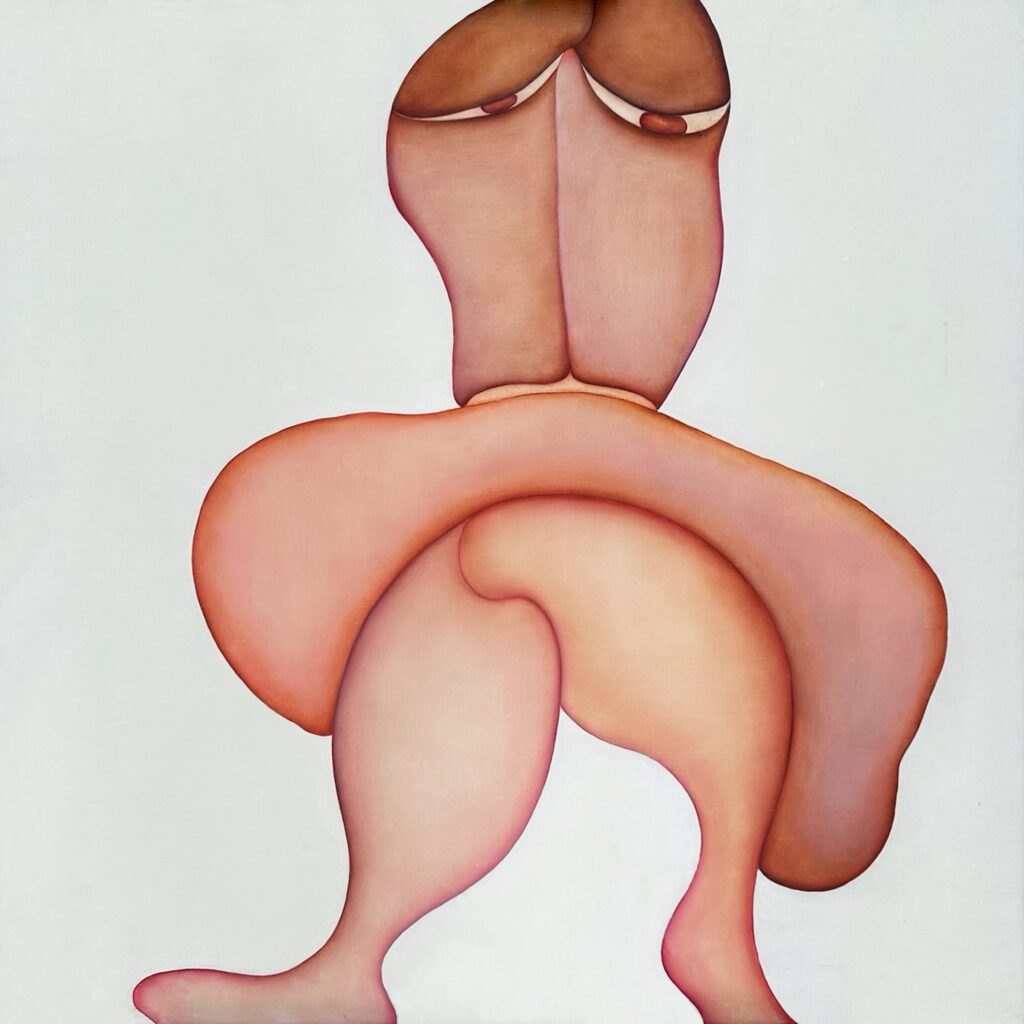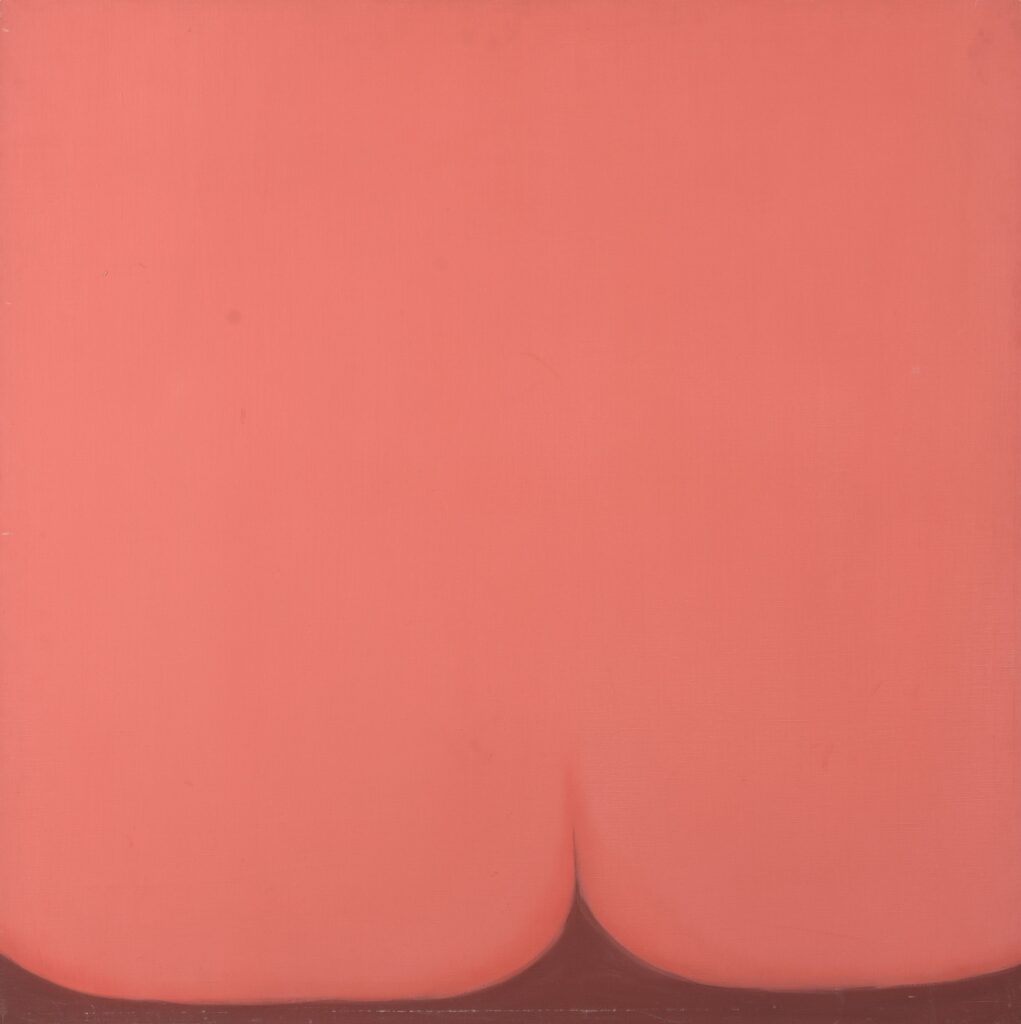Huguette CalandBribes de corps

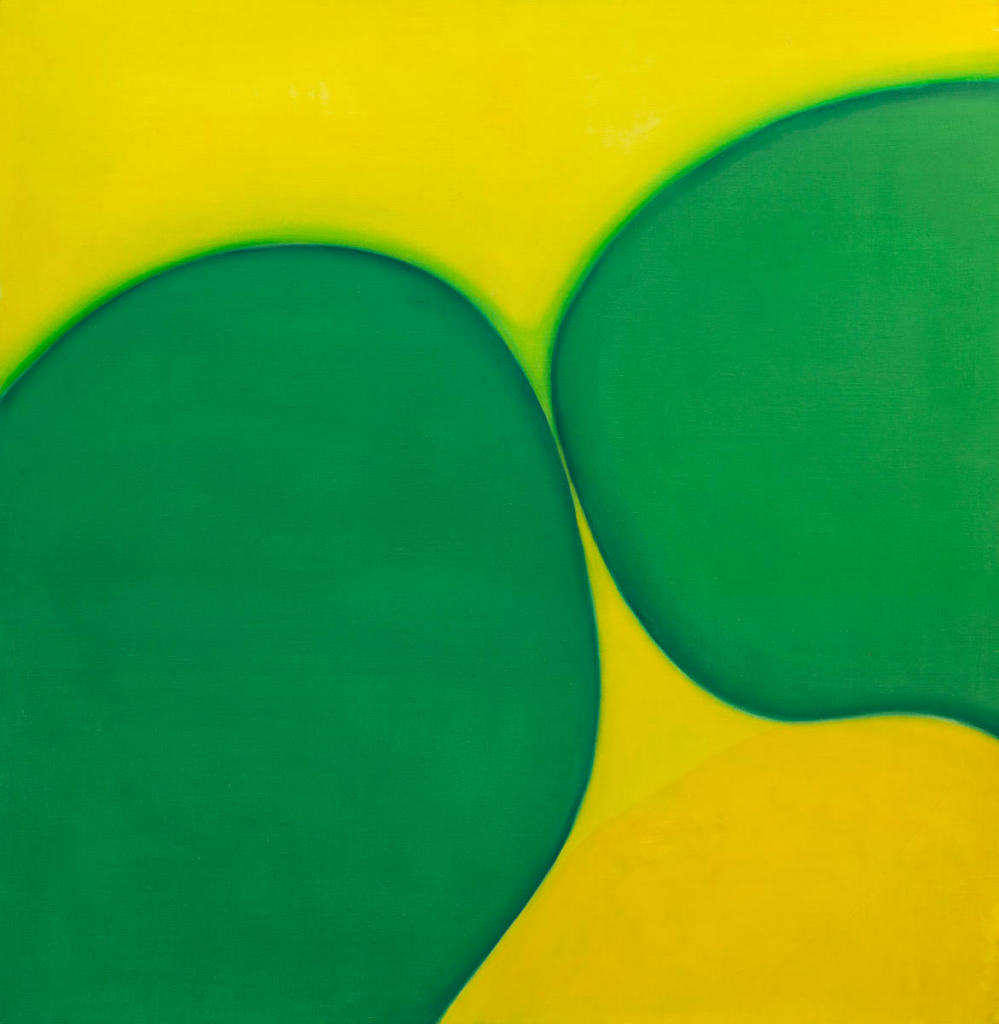
On View
Huguette Caland Bribes de corps
Gallery
About the Exhibition
Please joins us on Thursday, April 17 for the opening reception, free and open to all 6:00- 8:00 pm.
Huguette Caland: Bribes de corps presents painted works by the Lebanese artist whose life and career traversed decades, continents, and media, defying both aesthetic and social conventions of her time and place. Bringing together a significant corpus of works that have rarely been seen together, the exhibition focuses on the body of work that Caland produced while living in Paris in the 1970s, the Bribes de corps [“Body Bits”] and constitutes the largest presentation of the series to date.
Caland’s own body and her preoccupations with its size and its pleasures motivated much of her work throughout this period, and this exhibition introduces the languages—sometimes joyful and sometimes pain-ridden—she cultivated in shape and color to speak of her experience alongside those of other bodies. The artist also played with what western art history categorizes as the diametrically opposed poles of abstraction and figuration, rendering the distinction between color and line indiscernible, subject positions and parts indecipherable, and making normative or binaristic gendering unimaginable even as the body parts she painted often transform into landscapes or blend into the haze of color fields.
The work is contextualized in relationship to debates about gender and sexual norms in both France and Lebanon during the time. It concludes with a more recent painting from the artist’s late series of tapestry-like paintings, which bring her interest in the body and its surroundings to full force through a painterly idiom that borrows from the techniques and cultures of tatreez, or Palestinian embroidery. The exhibition also includes a selection of three embroidered dresses, which Caland designed and wore, and which consolidate the relationship between art and flesh in her practice.
This exhibition is curated by Hannah Feldman, Keith L. and Katherine Sachs Associate Professor of Contemporary Art, University of Pennsylvania.
Support Huguette Caland: Bribes de corps is provided by the Ambition Fund of the Arts Club of Chicago, which was originated by the Smart Family Foundation and individual donors.
Catalogues from the exhibition can be purchased in the online shop.
Installation images
About the Artist
Huguette Caland was born in Lebanon in 1931, the only daughter of Bechara El Khoury, who became, in 1943, the first President of the newly independent Lebanese Republic, and Laure Chiha, a member of a prominent political and banking family. In 1952, she married Paul Caland, whose family was fiercely opposed to El Khoury’s nationalist politics. The couple had three children. In 1964, Caland’s father died—four years after her mother—following a 3-year struggle with cancer, during which time Caland had remained steadfast at his bedside. It was only after his death that she felt free to pursue a life as a professional artist.
Having previously studied drawing privately for a year at the age of sixteen with Fernando Manetti, an Italian artist working in Beirut as the primary educator at ALBA, Caland followed the encouragement of the Lebanese painter Aref El Rayess and began studying in the art department at the American University of Beirut. At the time, the department adhered to a Bauhaus-style curriculum developed by a number of innovative educators, many from Chicago. Trained in the classroom, for example, of the artist and Islamicist John Carswell, she learned to harness her aesthetic inclinations in formal studies of line and shape.
She established a studio in her family home in Kaslik, which she eventually shared for a short time with the artist and art critic, Helen Khal, who had been another teacher at AUB and had become a close friend. With her husband, she also ran a popular restaurant in Beirut. Engagements with others in her community were always an important part of her life as is evidenced in much of her work as well as in the central roles her home assumed in the local art scenes of not only her natal Lebanon, but also, for example, Venice, California, where she spent most of her senior years. In Beirut, in 1969, she also co-founded with a few other Lebanese and Palestinian women, an NGO called Inaash, which, to this day, helps Palestinian women in refugee camps around Beirut develop and profit from the skill and tradition of Palestinian embroidery, tatreez.
In 1970, she moved to Paris, leaving her three adolescent children, her husband, and her lover in Beirut as she pursued a full-time life of being an artist. In Paris, she exhibited little, at least formally, but did develop professional ties with the art world, especially through the figure of the French critic, Raoul-Jean Moulin. She made a living selling paintings to friends, artists, and acquaintances. Eventually, she became closely involved with the Romanian sculpture, Georges Apostu, and also spent a year developing a line of couture abayas and household items of her own design that took inspiration from the traditions of Islamic art for the House of Pierre Cardin, under her own label, Nour.
In 1987, she left Paris for Venice, California. There she ran a productive studio out of the home she helped design, and hosted many of the best-known California artists of the time, including Ed Moses, with whom she and her family developed close relations, while exhibiting her own work very little locally.
Beginning in 1993 and the end of the Lebanese Civil War, she regularly returned to Lebanon, where she made and exhibited work, especially at Galerie Janine Rubeiz, which gallerist Nadine Begdache founded in honor of her mother, whose innovative cultural center, Dar El Fan, had given Caland her first, and highly celebrated, solo exhibition in 1970. Her production was incessant until the early 2010s, when her health began to decline just as a renewed interest in her work began to grow. In 2013, she returned to Beirut, where she passed away in 2019 at the age of eighty-eight.
Celebrated for its bold use of color, its fluidity of line, and its irreducible sensuality, Caland’s work has, especially over the last decade, finally begun to receive the attention that it has long deserved from museums and galleries around the world. Having made appearances in several Venice Biennales, including the most recent, and in major exhibitions, her works now stand in major collections, including The Museum of Modern Art (MoMA); Musée national d’art moderne, Paris; The Metropolitan Museum of Art; the Los Angeles County Museum of Art (LACMA); The Sharjah Art Foundation, The Hammer Museum, Los Angeles; and Tate Modern, amongst others.
